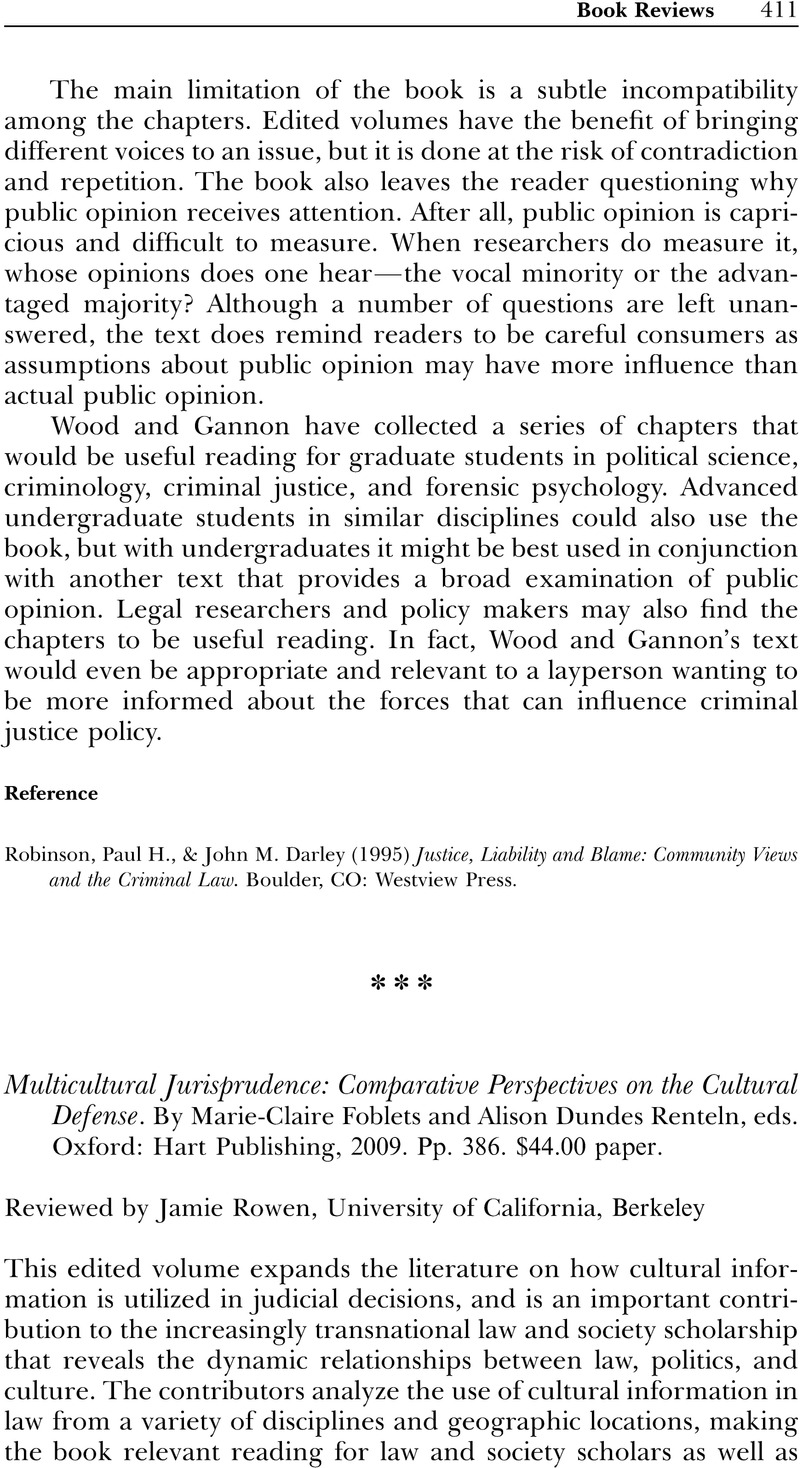Crossref Citations
This article has been cited by the following publications. This list is generated based on data provided by Crossref.
Pannia, Paola
2017.
The Elephant in the Courtroom: A Socio-Legal Study on How Judges Manage Cultural Diversity in Criminal Law Cases in Italy and the UK.
SSRN Electronic Journal,



